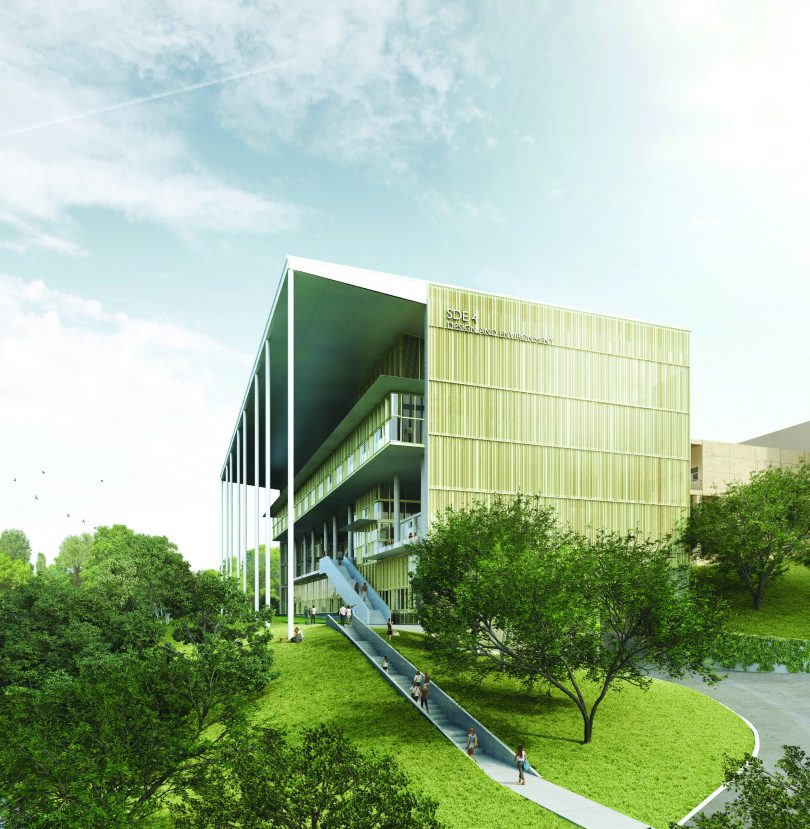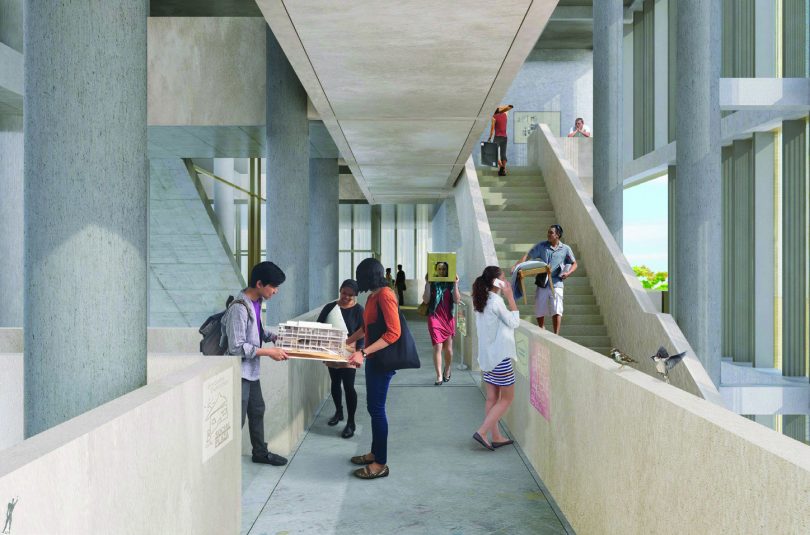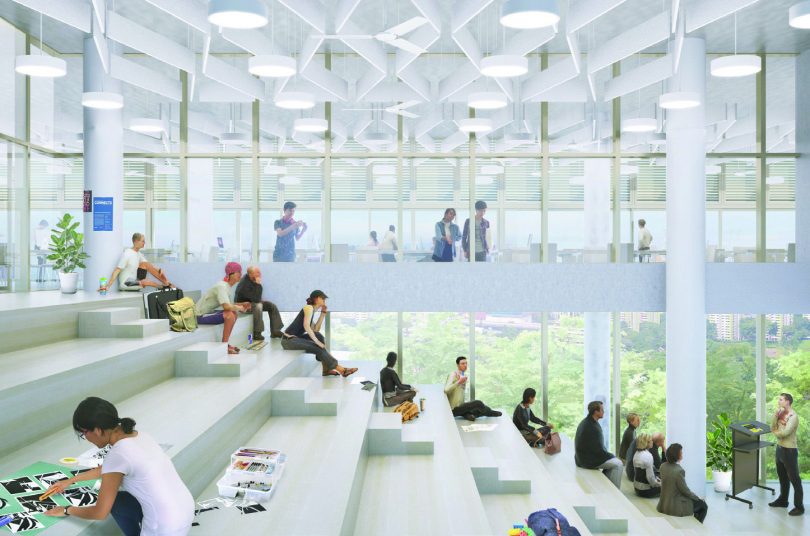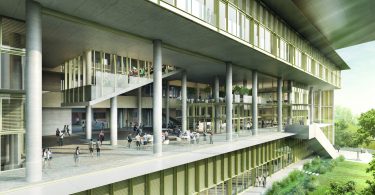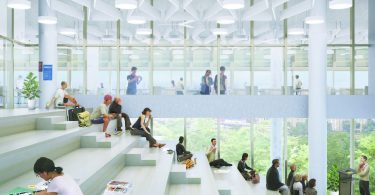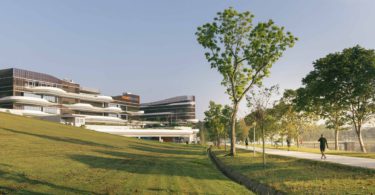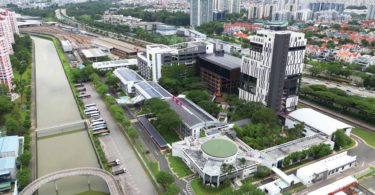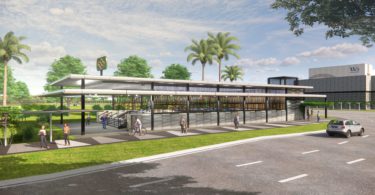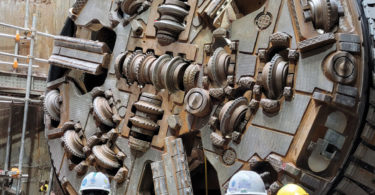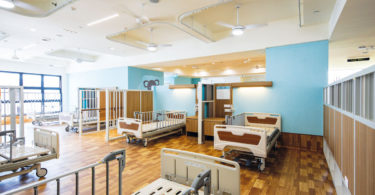The SDE4 is a new building for the School of Design and Environment to serve as the hub for integrating education, from design to implementation, as well as fostering industry and international collaborations through test bedding and developing relevant Green building technology.
Besides providing spaces for the students and faculty, the SDE4 is designed to contain spaces to support integrative teaching; facility for creating a living laboratory; facility for test bedding new building technology and inventions; as well as interactive facility (‘cockpit’) for online, real-time monitoring, display and control of all sustainability systems and their performance.
DESIGN GOALS
The brief required the project to be the new centre/hub of SDE, offering a bold representation of what the school teaches and becoming an accessible and powerful operational base for the students and faculty. It aspires to exceed the current standards for ‘Greening’ and indoor environmental quality, going beyond the strictures of Green Mark Platinum. It also aims to become a tool for learning and experimentation by making visible certain features, strategies and performance outcomes.
It is designed to be an on-site Net-Zero Energy Building (computed on an annualised basis), which is equipped for networking, data collection, and analysis and reporting. This will allow interventions and corrective actions to be clearly monitored and documented, making it an interactive facility that supports education and demonstration.
SITE AND LAYOUT
The new SDE4 design is a model example of zero carbon construction in a tropical climate. Rather than sealed air-conditioned interiors, the building embraces the potential of plants and landscape as part of the working environment. Solar shading is provided by an over-sailing roof and perforated screens on the east and west façades. On the glazed façade, there are large overhangs and high level louvres. To encourage natural ventilation, most glazing is openable and interiors feature high ceilings with fans.
The building is also an innovative model for teaching and research. The massing is broken down to give students and faculty better access to light and natural ventilation. A dramatic central staircase forms the social heart of the educational community—a place where students meet and share ideas. Level 3 features an outdoor plaza facing out over the landscaped hillside. These spaces are designed based on the idea that learning takes place not only inside the studio, but also in the informal social spaces of the building.
The design embeds the building seamlessly within the existing site and amongst many of the existing trees. While doing so it also creates a strong axis and connection to the existing spaces.
MATERIALS
One of the salient materials used in the building are the high-performance double glazed units (DGU) that are paramount to the performance of the spaces. Perforated corrugated aluminium screens act as shading devices, with the detailing creating a wavy surface to give the impression of a curtain. High-performance solar photovoltaic (PV) panels are also used to generate the maximum amount of energy from the available surface area.
OVERCOMING CONSTRAINTS
The design for the building was challenged not only by the high-performance benchmarks and goals, but also by the site condition and budget. The site was characterised by steep slopes at certain segments and the presence of several mature trees. Being sensitive to its environment, the layout for SDE4 was carefully managed to retain many of these trees. The budget challenged the creative and engineering ingenuity of the design team and prioritised the design aspects per the design brief.
But beyond the constraints of site and cost, the main aspect driving the design for SDE4 was the performance targets. All team members and elements within the building work together to deliver the desired user comfort and spatial experience without exceeding the strict energy budget.
Being part of the School of Design and Environment, the project incorporated many features that make it a live test bed for students and faculty to test design ideas. The design also makes many aspects of its workings visible to become a pedagogical tool for the school.
PROJECT DATA
Project Name: Net-Zero Energy Building @ SDE (NUS SDE4)
Location: School of Design and Environment, National University of Singapore (NUS), Singapore
Status of Construction: Ongoing (started in October 2016)
Expected Completion: 4Q 2018
Site Area: 5,040 square metres
Gross Floor Area: 8,517.22 square metres
Building Height: 6 storeys
Number of Rooms/Units: 22 user spaces and other common areas
Client/Owner/Developer: Office of Estate Development (OED), NUS
Architecture Firm: Surbana Jurong Consultants Pte Ltd
Principal Architect: Owen Wee Liam Choo (QP) (Surbana Jurong Consultants Pte Ltd)
Interior Design Firm: Serie+Multiply Consultants Pte Ltd
Principal Designer: Christopher Lee (Serie Architects, London)
Civil & Structural Engineer: Surbana Jurong Consultants Pte Ltd
Mechanical & Electrical Engineer: Surbana Jurong Consultants Pte Ltd
Quantity Surveyor: Surbana Jurong Consultants Pte Ltd
Lighting Consultant: LPA
Landscape Architect: Surbana Jurong Consultants Pte Ltd
Green Building Consultants: Surbana Jurong Consultants Pte Ltd; Transsolar
Main Contractor: Kajima Overseas Asia Pte Ltd
Images: Surbana Jurong Consultants Pte Ltd; Serie+Multiply Consultants Pte Ltd

 Malaysia
Malaysia Hong Kong
Hong Kong Indonesia
Indonesia Tiếng Việt
Tiếng Việt ประเทศไทย
ประเทศไทย


